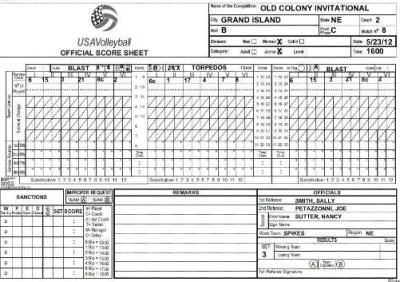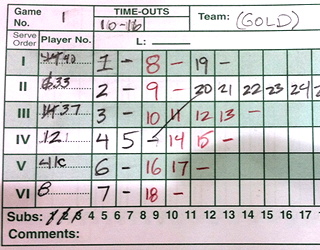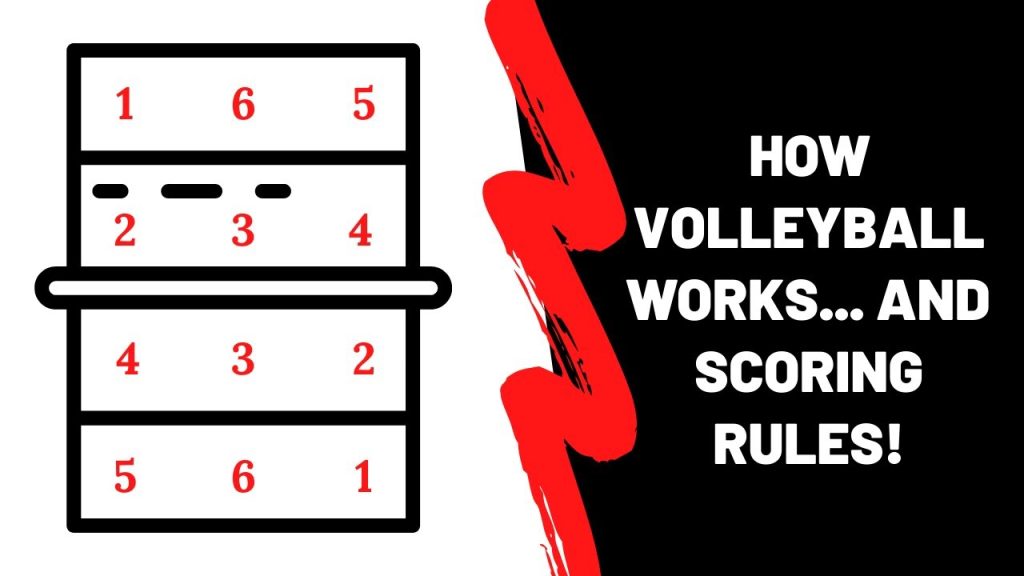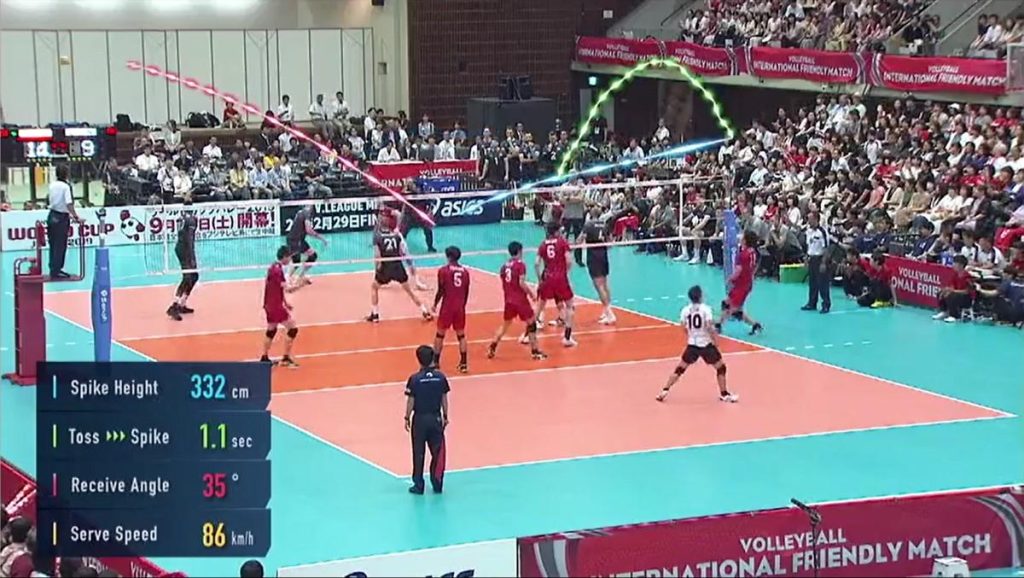Scoring in volleyball is essential to winning matches. Understanding how to score points will boost your team’s success.
Volleyball is a thrilling sport that requires skill and strategy. Whether you’re a beginner or an experienced player, knowing how to score can make a huge difference. Scoring in volleyball involves various techniques such as serving, attacking, and blocking. Each method demands precision and teamwork.
This guide will help you grasp the basics and advanced ways to earn points. By mastering these skills, you can elevate your game and lead your team to victory. Ready to learn more? Let’s dive into the art of scoring in volleyball.
Mastering The Serve
Mastering the serve is vital in volleyball. A strong serve can give your team a significant advantage. It’s the first attack and can disrupt the opponent’s formation. Let’s explore how to master the serve effectively.
Types Of Serves
Understanding different serve types is key. Each type has its own benefits and challenges. Here are some common serves:
1. Underhand Serve: This is the simplest serve. Beginners often start with this. It involves hitting the ball from below the waist. It’s easy to control but less powerful.
2. Overhand Serve: This serve is more advanced. The player hits the ball with an open hand. It’s powerful and can be directed better. It takes practice to master.
3. Jump Serve: The most challenging type. The player tosses the ball, jumps, and hits it mid-air. It’s powerful and fast. This serve requires good timing and skill.
Serve Placement Strategies
Where you place your serve is crucial. Good placement can confuse opponents and create scoring chances. Here are some tips:
1. Target Weak Players: Identify the weaker receivers. Aim your serves at them. This will increase the chance of an error.
2. Aim for the Corners: Serving to the corners makes it harder for the opponents to return the ball. It forces them to move and adjust quickly.
3. Mix It Up: Don’t be predictable. Vary your serve types and placements. Keep the opponents guessing. This increases your chances of scoring.
Mastering the serve requires practice and strategy. Focus on these tips, and you’ll see improvement in your game.

Credit: www.youtube.com
Effective Passing
Passing is a crucial skill in volleyball. It sets the stage for the rest of the play. A good pass can turn defense into offense quickly. Learning effective passing can make you an asset to your team. Let’s explore how to improve your passing with proper stance and hand positioning.
Proper Stance
A good stance is the foundation of a strong pass. Stand with your feet shoulder-width apart. Bend your knees slightly to stay balanced. Keep your weight on the balls of your feet. This makes it easier to move quickly in any direction.
Stay low with your back straight. Avoid bending at the waist. Lean slightly forward to keep your center of gravity low. This helps you stay stable and ready to react.
Hand Positioning
Proper hand positioning is key for a successful pass. Bring your hands together. Place one hand on top of the other. Extend your arms straight out in front of you. Keep your elbows locked.
Your thumbs should be side by side. Point them down towards the ground. This creates a flat surface to contact the ball. Aim to hit the ball with your forearms. Avoid using your palms or fingers.
Practice makes perfect. Focus on these elements. Your passing will improve. Your team will notice. And you will become a stronger player.
Setting Techniques
Setting in volleyball is crucial for a successful attack. It involves placing the ball where a hitter can strike it effectively. Mastering setting techniques can greatly impact the game. Let’s explore the different types of sets and the importance of footwork in setting.
Types Of Sets
There are various sets used in volleyball. The most common is the high set. It gives the hitter time to approach and jump. Another type is the quick set. This set is faster and requires precise timing. It is often used with taller hitters. The back set is also popular. It surprises the opposing team because it goes to the back row.
Setting Footwork
Footwork is essential in setting. Good footwork helps you get to the ball quickly. Position yourself under the ball for an accurate set. Always face the target with your body. Use small steps to adjust your position. Bend your knees for better balance. This ensures you can set the ball smoothly. Practicing footwork improves your overall setting technique.

Credit: www.strength-and-power-for-volleyball.com
Hitting With Power
Scoring in volleyball relies on powerful hits. Hitting with power can overwhelm opponents and secure points. It requires proper technique and practice. Let’s break down how you can hit with power in volleyball.
Approach And Jump
The approach is the first step to hitting with power. Start with a strong, three-step approach. Your steps should be quick and balanced. This helps you gain momentum. As you reach the net, plant your last step firmly. Bend your knees to prepare for the jump.
Jump straight up with explosive power. Use your arms to help lift your body. Your eyes should stay on the ball. Timing is key. Jumping too early or too late can ruin the hit. Practice your approach and jump to make it second nature.
Arm Swing Mechanics
Your arm swing is crucial for power. Start with your hitting arm back. Keep your elbow high. Your non-hitting arm should point at the ball. This helps with aim and balance.
As you jump, bring your hitting arm forward. Swing fast and strong. Hit the ball with the palm of your hand. Follow through with your arm. This adds extra power and control.
Focus on your wrist snap at the end of the swing. A good wrist snap can make your hit more powerful. Practice your arm swing mechanics regularly. Good technique makes all the difference.
Blocking Skills
Blocking is a key skill in volleyball. It can change the game’s pace. Good blocking can stop an opponent’s spike. It can also give your team a chance to score. To block well, you need good timing and positioning.
Timing The Block
Perfect timing is crucial. Jump too early or too late, and you miss the ball. Watch the setter and hitter closely. This will help you predict the hit. Practice your jumps to get them just right.
Here are some key points:
- Watch the ball closely.
- Jump just as the hitter is about to strike.
- Keep your hands high and strong.
- Keep your eyes on the ball, not the player.
Positioning At The Net
Good positioning is also important. Stand close to the net but not too close. This gives you room to jump and block. Your feet should be shoulder-width apart. Keep your knees slightly bent. This helps you react quickly.
Follow these steps for perfect positioning:
- Stand with your feet shoulder-width apart.
- Knees should be slightly bent.
- Keep your body square to the net.
- Move sideways quickly to follow the ball.
- Jump straight up, not forward.
Mastering timing and positioning will improve your blocking skills. This will help your team score more points. Practice these skills regularly to become a better blocker.
Defensive Strategies
Defensive strategies in volleyball are critical for success. They involve reading the opponent and making quick decisions. Good defense can turn the tide of a game. Players need to be alert and ready to move at any moment. The following sections will provide tips on how to enhance your defensive skills.
Reading The Opponent
Understanding your opponent’s moves is vital. Watch their body language. Pay attention to their footwork and arm position. These clues can tell you where they will hit the ball. Stay focused on their setter and hitters. This will help you anticipate their next move. Always stay one step ahead.
Digging Tips
Digging is a key defensive skill. Position yourself low and balanced. Keep your arms together and hands open. When the ball comes, use your forearms to absorb the impact. Direct the ball to your setter. Practice makes perfect. Work on your reaction time and agility. Always be ready to dive or slide to save the ball.
Team Communication
Team Communication is crucial in volleyball. Clear and effective communication helps players coordinate their movements and strategies. It ensures everyone knows their roles and positions. This minimizes errors and maximizes scoring opportunities.
Calling For The Ball
Calling for the ball is essential for avoiding confusion. Players must use loud and clear voices. Shouting “Mine!” or “Got it!” helps teammates know who will take the ball.
- Setters call for the ball to set up attacks.
- Hitters call to indicate readiness for a spike.
- Defensive players call to claim the ball for a dig or pass.
Effective calling ensures smooth plays and fewer mistakes.
On-court Signals
On-court signals are just as important as verbal communication. Hand signals help convey strategies without speaking. This is useful in noisy environments.
| Signal | Meaning |
|---|---|
| Open Hand | Ready for a set |
| Closed Fist | Blocking signal |
| Pointing | Indicating where to serve or pass |
These signals help in maintaining coordination. They make sure every player understands the plan.

Credit: www.askdavetaylor.com
Mental Preparation
Mental preparation is key to scoring in volleyball. The right mindset can significantly impact your performance. Focus and composure can be the difference between winning and losing. Let’s explore essential mental techniques.
Staying Focused
Staying focused is crucial in volleyball. Distractions can lead to errors. Here are a few tips to stay focused:
- Visualize successful plays before the game.
- Take deep breaths to remain calm.
- Set small, achievable goals during the match.
Concentration helps in anticipating the opponent’s moves. It also ensures quick reactions. Maintain eye contact with the ball. Communicate effectively with teammates. This enhances coordination and focus.
Handling Pressure
Handling pressure is essential in high-stakes moments. Pressure can affect your performance. Here are some ways to manage it:
| Technique | Benefit |
|---|---|
| Positive self-talk | Boosts confidence |
| Practice under pressure | Builds resilience |
| Stay in the moment | Reduces anxiety |
Learn to embrace pressure. View it as a challenge, not a threat. Remember, every player feels it. The way you handle it sets you apart.
Frequently Asked Questions
How Is A Point Scored In Volleyball?
A point is scored when the ball hits the ground on the opponent’s side, or if the opponent commits a fault.
What Is A Fault In Volleyball?
A fault occurs when a player violates the rules, such as touching the net, or making an illegal hit.
Can You Score On A Serve In Volleyball?
Yes, you can score on a serve. This is called an ace, where the ball lands untouched on the opponent’s court.
How Many Points To Win A Volleyball Set?
A team needs 25 points to win a set. They must also have a two-point lead.
Conclusion
Scoring in volleyball takes practice and strategy. Focus on your serves and spikes. Communicate well with your teammates. Understand the rules and stay alert. Improve your techniques through regular training. Remember, teamwork is key. Celebrate small wins and learn from mistakes.
Keep a positive mindset. Enjoy the game while you improve. With effort and dedication, your volleyball skills will grow. Happy playing!


